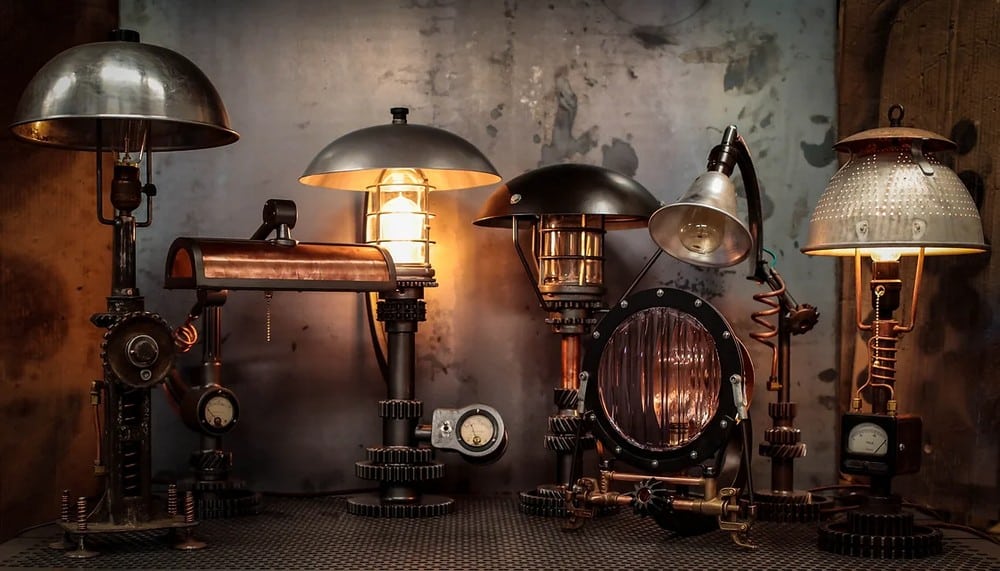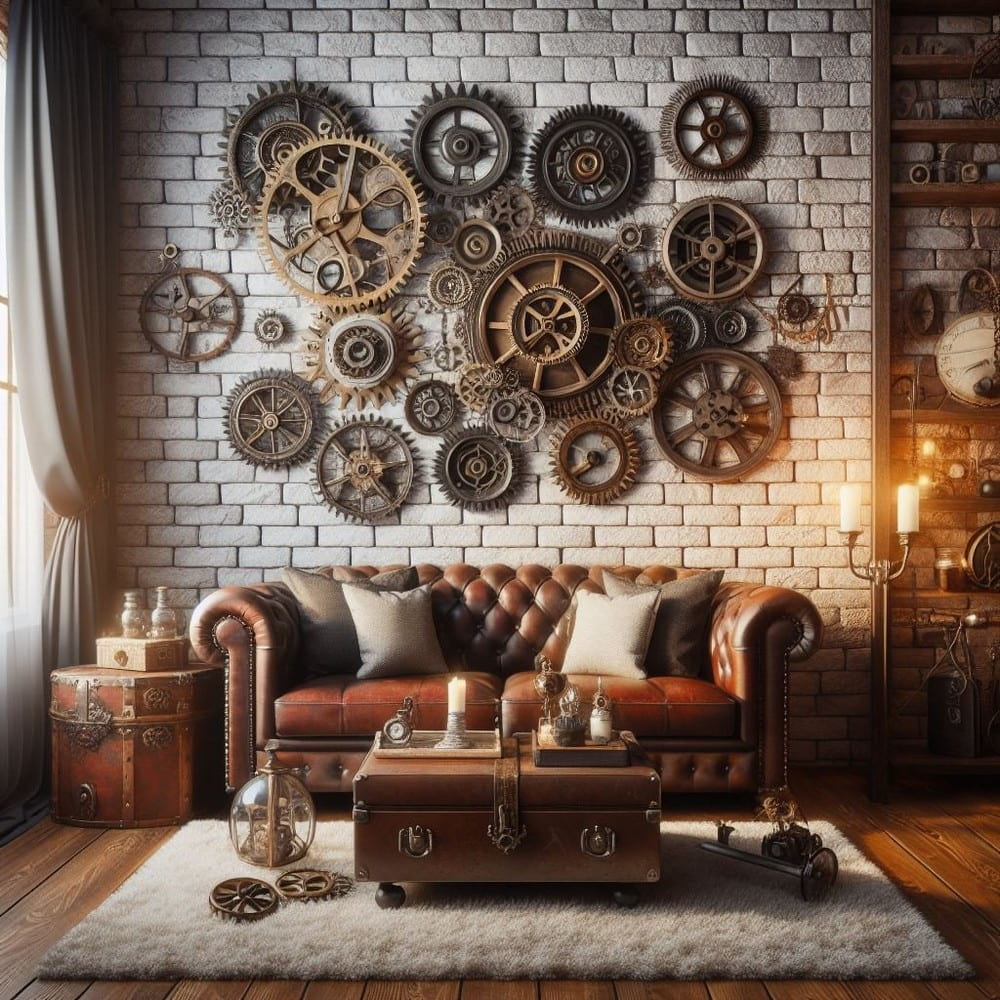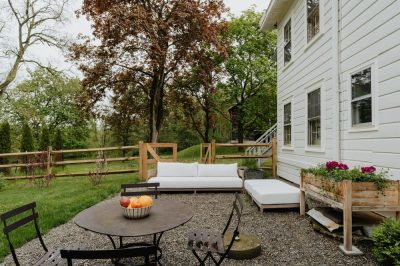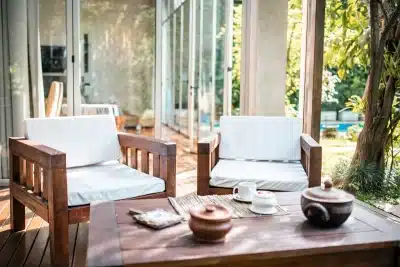
Steampunk interior design is more than just an aesthetic—it’s a philosophy of creativity and personalization, particularly through DIY projects and custom-made accessories. This approach enables enthusiasts to craft decor that not only aligns with the steampunk theme but also reflects their unique tastes. DIY projects in steampunk go beyond budget-friendly solutions; they embrace the style’s spirit of invention, exploration, and resourcefulness.
The DIY Spirit: Innovation and Customization
In steampunk design, custom-made pieces are central to creating an authentic space. Because steampunk celebrates mechanical ingenuity and retro-futurism, many elements are handcrafted, repurposed, or creatively assembled from vintage and industrial materials. Crafting your own steampunk decor allows you to merge antique aesthetics with functional modern touches, echoing the very essence of the style, which merges the past and future.
For instance, enthusiasts can transform old gears into wall art or convert discarded industrial pipes into unique lighting fixtures. DIY projects also offer opportunities to incorporate technology in ways that remain true to the steampunk theme. Adding brass or copper accents to modern devices, such as speakers or clocks, lends them an antique, mechanical feel that seamlessly blends old-world charm with modern convenience.
The DIY ethos extends to furniture as well. You can repurpose an industrial workbench into a dining table or desk, or use an old leather trunk as a coffee table with a steampunk twist. Customizing furniture with rivets, exposed bolts, or leather straps can transform ordinary items into pieces that look like they belong in a Victorian-era inventor’s workshop.
Crafting Steampunk Accessories
Accessories play a key role in defining the steampunk aesthetic, and DIY projects allow enthusiasts to craft unique pieces that embody the spirit of the style. While industrial components such as gears and pipes are common, steampunk accessories often evoke exploration and discovery. Globes, compasses, and telescopes frequently appear, evoking the Victorian fascination with adventure and scientific inquiry.
When crafting or selecting steampunk accessories, consider the materials and the story they tell. Objects made of brass, copper, and aged leather can bring warmth and history into your space. Custom details such as etched metal plates, personalized engravings, or hand-crafted finishes can elevate even the simplest object into a statement piece that ties the room together.
Upcycling vintage tools, clocks, or scientific instruments is another popular DIY trend in steampunk decor. Old-fashioned items like telephones, typewriters, and cameras can be modified into statement pieces that not only look striking but also contribute to the room’s overall narrative. For example, a vintage clock or barometer reinforces the sense of a bygone era when time was measured mechanically rather than digitally.
Lighting and Ambiance: The Heart of Steampunk DIY
Lighting plays an essential role in any steampunk space, both in terms of functionality and ambiance. Custom lighting fixtures made from salvaged pipes, exposed bulbs, and metal frames provide a warm, industrial glow that complements the rich color palette typically found in steampunk interiors. Edison bulbs, with their vintage filaments, add a nostalgic touch, making them ideal for steampunk environments.
A DIY lighting project might involve transforming everyday items—such as old lanterns, industrial tubing, or even repurposed camera lenses—into functional art. These lights serve as both practical fixtures and conversation pieces, adding depth and layers of interest to the space.
Chandeliers made from repurposed metal and glass, or lamps with visible mechanical parts like gears and chains, can also become focal points in a room. The combination of handcrafted elements and creative assembly gives lighting fixtures in a steampunk home a unique, personalized touch, reflecting both innovation and artistry.
Personalizing with Found Objects
Steampunk design thrives on the transformation of found objects into something meaningful and beautiful. Whether it’s an old, broken-down machine or a vintage suitcase, steampunk encourages the repurposing of everyday items to contribute to the overall narrative of the space. This practice aligns with the spirit of innovation and resourcefulness that defines steampunk.
For example, you can mount old pocket watches as wall art or convert vintage luggage into functional decor. Customizing these objects with brass details, leather straps, or intricate carvings can further integrate them into the steampunk aesthetic. By turning seemingly forgotten items into functional pieces, DIY enthusiasts can create a home filled with character, history, and adventure.
Accessorizing with Victorian Elegance
While industrial components and DIY projects define much of steampunk, Victorian elegance remains a key influence, particularly in accessories. Adding Victorian-inspired elements such as vintage jewelry boxes, ornate mirrors, or tufted cushions softens the harder, mechanical edges of the industrial aesthetic. The juxtaposition of delicate, hand-crafted details with rugged, utilitarian components is what makes steampunk design so distinctive.
Victorian-inspired drapery, for example, can complement the steampunk look by incorporating rich fabrics like velvet or brocade. These textiles can be enhanced with brass or leather accents to tie them into the industrial elements, while maintaining the luxurious, opulent feel associated with the Victorian era.
A Final Thought on DIY and Steampunk Customization
Ultimately, steampunk thrives on individual creativity and customization. The DIY spirit allows homeowners to blend function and form in ways that adhere to the steampunk aesthetic while reflecting their personal tastes and experiences. Whether you’re repurposing old machinery, crafting your own furniture, or sourcing vintage items, the key to a successful steampunk interior lies in its ability to merge the past and future seamlessly. By focusing on the blend of historical elegance and industrial innovation, you create a world where invention and imagination take center stage, resulting in a space that is as personal as it is immersive.









